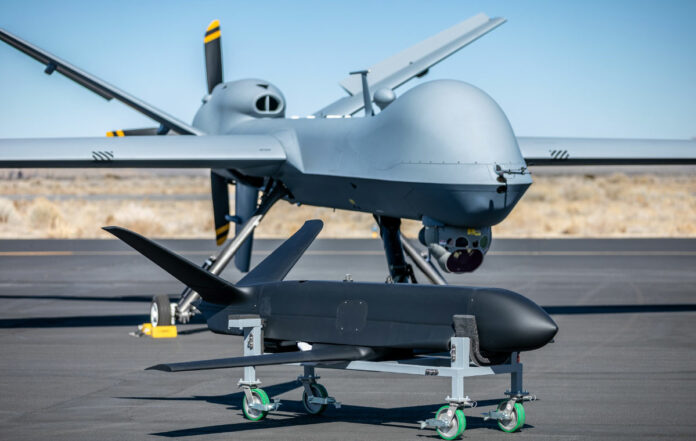General Atomics Aeronautical Systems, Inc. (GA-ASI), GA’s division that fosters the most the adoption of AM, announces a partnership with Divergent Technologies, a tech automotive company known for the manufacture of human-AI-designed and 3D printed hypercars.
At the heart of Divergent Technologies’ manufacturing process lies the DAPS system, an end-to-end hardware-software platform which combines Additive Manufacturing and generative design, and which is capable of computationally engineering, printing, and assembling automotive builds, with minimal human intervention. With the latest funding round they secured, Divergent have made it clear that they wanted to make the DAPS system available to other industrials.
The designer of Remotely Piloted Aircraft (RPA) systems will now apply this capability to manufacturing its line of unmanned aircraft systems (UAS).
“Throughout our 30 years of designing and developing advanced UAS, GA-ASI has been focused on implementing new capabilities into our manufacturing process,” said GA-ASI President David R. Alexander. “We’re working with Divergent to integrate their technology as part of our Additive Design and Manufacturing Center of Excellence strategy, with the goal of optimizing our design and manufacturing processes and providing next generation UAS at the lowest cost.”
According to a press release, both companies started a joint development program last year across multiple platforms. GA-ASI’s Additive Manufacturing (AM), aircraft integrity, material and design engineering teams ambition to qualify Divergent’s technology to GA-ASI’s aircraft production.
“DAPS can be used to build the underlying structure for virtually any vehicle – whether land, sea, air, or space – better, faster and more cost efficiently than traditional manufacturing,” said Kevin Czinger, Founder, Lead Inventor & CEO of Divergent.
GA-ASI and Divergent have already completed two projects leading to a fully integrated small (< 500 lbs.) UAS aerostructure, leveraging model-based, Artificial Intelligence (AI)-driven, and topology optimized designs. The integrated metal structure was 3D printed, which led to the reduction of the part count integration by over 95% while meeting weight targets.
The DAPS process inspected each printed components by creating a full digital twin of the small UAS (SUAS) that was then applied to a fully automated, tool-less robotic assembly process that took less than 20 minutes to complete. This process enabled the team to go from a print-ready SUAS design to a fully assembled deliverable airframe in less than two days. GA-ASI anticipates this capability will enable near-theater ramp capacity in the future to support the warfighter.
This innovative approach to design and manufacturing leads to highly integrated weight and performance-optimized designs that are naturally, but not exclusively, leveraging AM technologies at a substantially lower airframe recurring cost, while providing a rapid tool-less iterative design approach for multiple platform variants, a press release states.
Remember, you can post jobopportunities in the AM Industry on 3D ADEPT Media free of charge or look for a job via our job board. Make sure to follow us on our social networks and subscribe to our weekly newsletter : Facebook, Twitter, LinkedIn & Instagram ! If you want to be featured in the next issue of our digital magazine or if you hear a story that needs to be heard, make sure to send it to contact@3dadept.com


